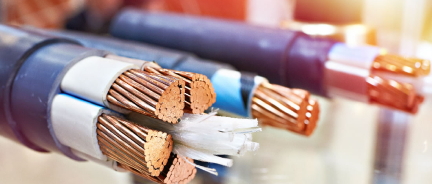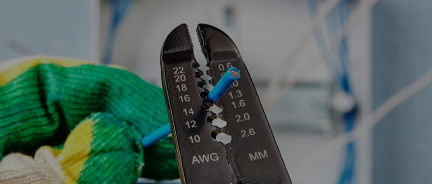RG316 vs. RG174: All About Micro-Coax Cables

While the most popular coax cables on the market are RG6, RG11, and RG58/59, the range of coaxial cables is actually larger. Most notably, there are low-diameter small gauge coaxial cables that are meant to run for short distances, such as RG174 and RG316. They are sometimes referred to as micro-coax or mini-coax cables. This blog discusses their characteristics and applications.
What are RG174 and RG316 micro coax cables?
RG174 and RG316 are 26 AWG coaxial cables known as micro coax due to their small size and diameter. These are extremely flexible, thin cables with high temperature ratings. To put things into perspective, the flexibility of these cables is superior to the one of RG58.
Micro coax cables follow several military standards because they are often used in military equipment. Depending on the manufacturer, they can follow MIL-DTL-17 and/or MIL-C-17F.
Cons Of Micro-Coax Cables
The downside of micro coax cables is that they experience more significant signal loss compared to bigger cables like RG6, RG 11, and RG59. Therefore, they are only used for shorter cable runs.
RG174 and RG316 Differences and Similarities
RG174 and RG316 have similar diameters at 2,79 mm (0.11 inches) and 2,49 mm (0.098 inches). Both cables have a 50 Ohm impedance. Depending on the manufacturer, their inner composition is either almost identical or very similar. They usually have silver-coated copper-clad steel-stranded conductors, PTFE insulation, silver-plated copper outer braid, and an FEP jacket.
However, RG174 may sometimes come in a cheaper construction, depending on the manufacturer. For example, it can have steel copper strand conductor, PE polyethylene insulation, tinned copper outer braid, and PVC outer sheath. An RG174 cable with construction of this kind will have a lower temperature rating of -20°C to +80°C. To compare, if the cable has similar construction to RG316 with a silver-coated conductor and FEP outer jacket, both of them have an impressive temperature rating of -55°C to 200°C.
Notes on RG174 vs RG178 Cable
A RG174 cable also has a similar variation, RG178. The difference between the two is their different diameter and gauge. RG174 has a 2.79mm (0.11 inches) diameter compared to RG178, which has only 1.83 millimeters (0.071 inches). Moreover, the gauge of RG174 is 26 AWG, while the gauge of RG178 is only 30 AWG. RG178 will experience more signal loss than RG174 and RG316 because of its size.
Common Applications Of Micro-Coax Cables
Finally, here are the common applications of cables like RG316 and RG174. These are very similar to common coax cable applications, except that they call for cables of much smaller sizes.
The applications are:
- All short-length radio-frequency applications where signal loss is not a significant concern
- LAN/WAN and GPS signal transmission
- Industrial and military automation systems
- Testing and measurement equipment
- Robotics
- Endoscopic equipment, ultrasound, and other medical equipment
- Different types of sensors
- Wi-Fi (RG316 or silver-stranded RG174 are preferable)
Summing Up
All things considered, the differences between RG174 and RG178 are far less pronounced than one could imagine. It all boils down to the construction of the cable. If the construction is identical, the difference between the cables is only nominal and has to do with the diameter needed for a specific application.
However, the construction of some cheaper RG174 variations may lead to them having a lower temperature range of -20°C to +80°C opposed to -55°C to 200°C. When in doubt, pick RG316 if the high temperature range matters to you.
RG174, RG178, and RG316 are not the only mini-coax cables on the market. Other options have different characteristics, like 75 Ohm impedance or slightly lower signal loss. However, these other cables are rare.
At NNC, you can purchase Belden Stranded BCCS RG174/U TC Braid Shield PE PVC Low Noise Coaxial Cable, Times Microwave LMR-100-PUR Flexible Low Loss Communications Coax Cable, or pick a different cable from a wide selection of data and communication cables.

















